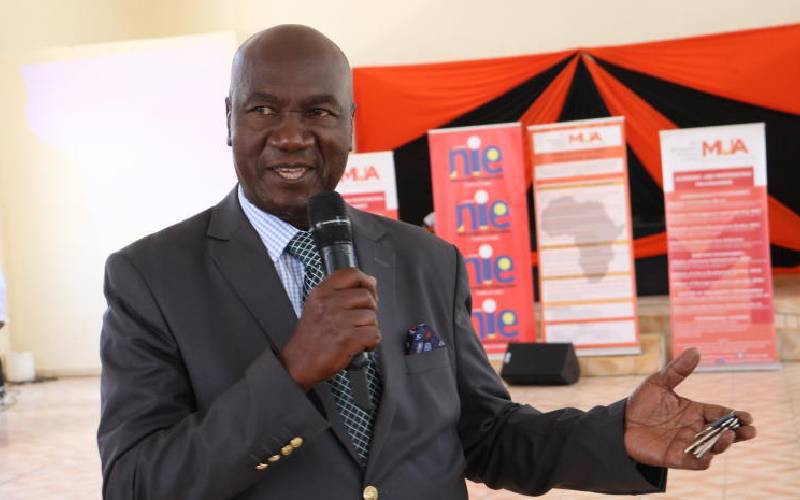The icing on the cake for students who have gone through eight years of primary education and four years of secondary education is earning a place in one of our universities. For parents and students alike, the pride of making it to university cannot be gainsaid, for it is the reward for hard work. The importance of education cannot be understated.
Education gave students a ladder out of poverty. It opened doors to great opportunity. Thus the announcement by the Kenya Universities and Colleges Central Placement Services (KUCCPS) which replaced the Joint Admissions Board (JAB) that 17,000 students, despite qualifying to join universities, have missed slots in the first selection exercise is heartbreaking.
In 2014, 483,630 students sat the Kenya Certificate of Secondary Education (KCSE).
This represented 92.15 per cent of the total number of students who joined secondary school in 2011. The remaining 7.85 per cent might have abandoned learning for lack of fees or other reasons. Education Cabinet Secretary Jacob Kaimenyi announced the 2014 KCSE results in March this year. The overall performance registered an improvement on the 2013 performance. Thirty per cent of those examined in 2014 qualified for a university place.
From this, it was clear that existing universities could not absorb all the students who merited a place at the institutions of higher learning. While the free primary education concept registered an increase in school enrolment at primary and later secondary schools, the expansion of institutions of higher learning was not prioritised.
In fact, most of the tertiary institutions were turned into constituent colleges of universities. The insistence on white collar jobs means universities don't cope with the high numbers of qualified Form Four leavers.
These tertiary colleges served as a safety valve in the education sector offering vocational training like masonry, carpentry, basic electrical. Increasingly, these handy cadre of professionals is depleting from the economy. This should concern policy makers. Moreover, there are concerns about the training in some of the universities. An issue often raised by some employers. Be that as it may, the education sector needs urgent attention.
It is even worse for students wishing to pursue courses in Architecture, Law, Actuarial Sciences, Commerce and Information Technology in view of the fact that the Chief Executive Officer of KUCCPS, John Maraguri hinted after the release of the 2014 KCSE results that due to the large numbers of students who had qualified, aggregate points would be reviewed upwards. Such punitive measures only serve to illustrate how ill- prepared the Government is in consolidating gains made in the education sector and improving on them.
At greater cost, students who excelled may be forced to join their counterparts in pursuing parallel degree courses but even here, the Government has been less than supportive. Consequently, the undesired culture of inflating grades, which compromises standards, has taken root.
While the Government must expand and give universities better funding, it should take advantage of technological advances to encourage e-learning. Apart from the convenience it offers, the element of cost is relatively lower, hence available to many wishing to advance their education.
 The Standard Group Plc is a
multi-media organization with investments in media platforms spanning newspaper
print operations, television, radio broadcasting, digital and online services. The
Standard Group is recognized as a leading multi-media house in Kenya with a key
influence in matters of national and international interest.
The Standard Group Plc is a
multi-media organization with investments in media platforms spanning newspaper
print operations, television, radio broadcasting, digital and online services. The
Standard Group is recognized as a leading multi-media house in Kenya with a key
influence in matters of national and international interest.
 The Standard Group Plc is a
multi-media organization with investments in media platforms spanning newspaper
print operations, television, radio broadcasting, digital and online services. The
Standard Group is recognized as a leading multi-media house in Kenya with a key
influence in matters of national and international interest.
The Standard Group Plc is a
multi-media organization with investments in media platforms spanning newspaper
print operations, television, radio broadcasting, digital and online services. The
Standard Group is recognized as a leading multi-media house in Kenya with a key
influence in matters of national and international interest.








